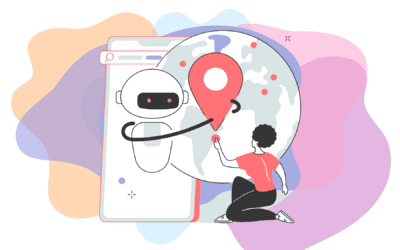While this use case for virtual assistants has become ubiquitous, it only scratches the surface of the potential. AI can perform tasks that humans can’t or don’t want to do, which is especially important in light of staffing shortages caused by the Great Resignation. Fast Company reported that 9% of full-time employees interviewed for a recent survey said they were considering quitting because of boring work, which shows that workers are chafing against rote tasks.
Meanwhile, the market for virtual assistants is growing. Insider Intelligence predicts that consumer retail spend via chatbots worldwide will reach $142 billion by 2024—up from $2.8 billion in 2019.
While customer service will continue to be the predominant way that virtual assistants are brought to market for the next few years, the adoption of new use cases is accelerating. It’s clear that an increasing percentage of virtual assistants of the future will be functional experts with domain-specific expertise in healthcare, manufacturing, technology, and other areas. According to Gartner, 40% of advanced virtual assistants will be skilled and domain-specific, based on customized language models, by 2025, up from less than 5% in 2021.
Here are five emerging use cases for virtual assistants to keep an eye on:
- Virtual assistants for the enterprise
While much less ubiquitous than chatbots for customer service, virtual enterprise assistants are increasingly commonplace. These are internal-facing applications designed to help companies reduce administrative burdens. The COVID-19 pandemic accelerated their adoption due to how exceptionally bogged down HR, IT, and other departments became.
Per Gartner, advanced enterprise virtual assistants can perform more complex tasks like document review or updating on warehouse shipping requests, while standard applications are designed to perform rote tasks like IT troubleshooting and calendaring. Overall, uptake of this flavor of virtual assistants to date has been strong in the media, marketing, and advertising industries as well as in manufacturing, but other industries are likely to follow suit.
- Virtual sales assistants
There are two categories of virtual sales assistants: ones that help qualify leads higher up in the sales funnel and those that facilitate transactions.
Lead-qualifying assistants can be used to pre-qualify prospects for a major purchase or financial commitment, such as a mortgage or a new car, and identify upsell opportunities. This frees up salespeople’s time to focus on leads with the biggest upside, helping them increase their commissions in the process. (This, in turn, makes them less likely to quit.)
The other category helps customers complete transactions faster by surfacing pricing and availability information, simplifying the sales process. There are already Ticket Sales Assistants, and we expect to see assistants for parking and merchandise soon. Instead of being directed to a separate website to complete purchases, consumers can close the loop in the same chat experience where they’ve been seeking initial information. For example, when a consumer writes, “I’m looking for 2 tickets to tonight’s game by 3rd base,” a virtual assistant’s natural language processing capabilities will infer what they need and surface ticket options. This gets to the point quicker—ensuring the sale is made and offering a better user experience.
- Chatbots for live experiences
Virtual assistants can be deployed to provide a concierge experience at live events—and in locations where there’s no human concierge to help direct people.
For example, a Food & Beverage Assistant can help sports fans, and concert attendees figure out what they want to eat and drink, seamlessly purchase their choices from within the chat experience, and then have it waiting for them to pick up. A Parking Assistant can provide information about parking and transportation—and let people pre-purchase a parking spot before they leave for the stadium or arena. An On-site Assistant can tell attendees the best way to enter or exit if they have mobility problems or simply based on the location of their seats.
Hospitality companies and entertainment districts are also starting to use virtual assistants as the face of their brands. For example, Satisfi Labs’ client Miracle Mile Shops launched an assistant named “Jules” to answer all guest questions and facilitate transactions, imbuing her with a distinctive personality and a strong brand voice. In the absence of an on-site guest service staff, Jules is the face of the Las Vegas brand.
- Branded concierge assistants
Branded concierge assistants can make product recommendations and answer an exhaustive set of questions about a product line, above and beyond what any human could reasonably be expected to know. (A retail employee couldn’t possibly be expected to have off-the-cuff knowledge about the specs of every single product sold in their store.) This helps to drive incremental sales.
Today, branded concierge assistants, or “virtual brand ambassadors,” are primarily found in the Retail and Education categories, according to Gartner. For example, Sephora launched a chatbot version of its “Virtual Artist” application on Messenger, letting customers share a lip shade, brand, color, or format to get instant product recommendations, which they can purchase without ever leaving the chat experience.
- Virtual assistants for the metaverse
As the metaverse takes shape and becomes an everyday reality, companies may need to figure out how to staff virtual locations. Sports teams like the MLB’s Atlanta Braves and the Premier League’s Man City have announced forays into the metaverse that will bring fans into digital twins of their stadiums, which presages a need for virtual venue assistants to explain how to make the most of the experience.
If the virtual Travis Scott concert attended by 12 million Fortnite streamers in April 2020 is any indication of the potential audience for such events, virtual event assistants may also be needed to staff virtual concerts. Meanwhile, tech-forward retailers like Nike may also need virtual assistants to help staff their virtual real estate footprint.
The Take-Away:
The future of the workforce won’t just be human, and this should be cause for celebration rather than alarm. By investing in AI-powered virtual assistants with instant recall and the power to retain and process huge volumes of information (while also performing rote tasks that can lead to burnout), companies can future-proof their customer experience strategy and reduce attrition at the same time.
Within the next handful of years, immense knowledge will start to be unlocked through voice commands, and the customer service use case that predominates in chatbots today is the tip of the iceberg. Soon enough, domain-specific virtual assistants with specific functional roles will have a considerable impact on sales, engagement, and the bottom line.




